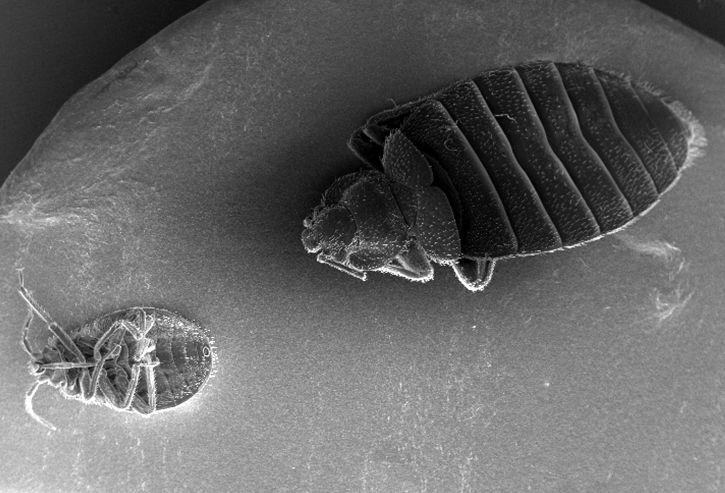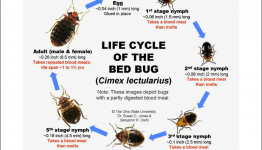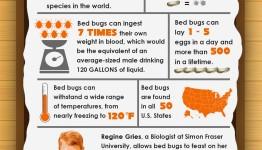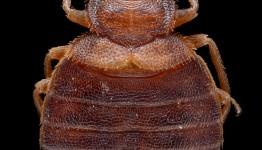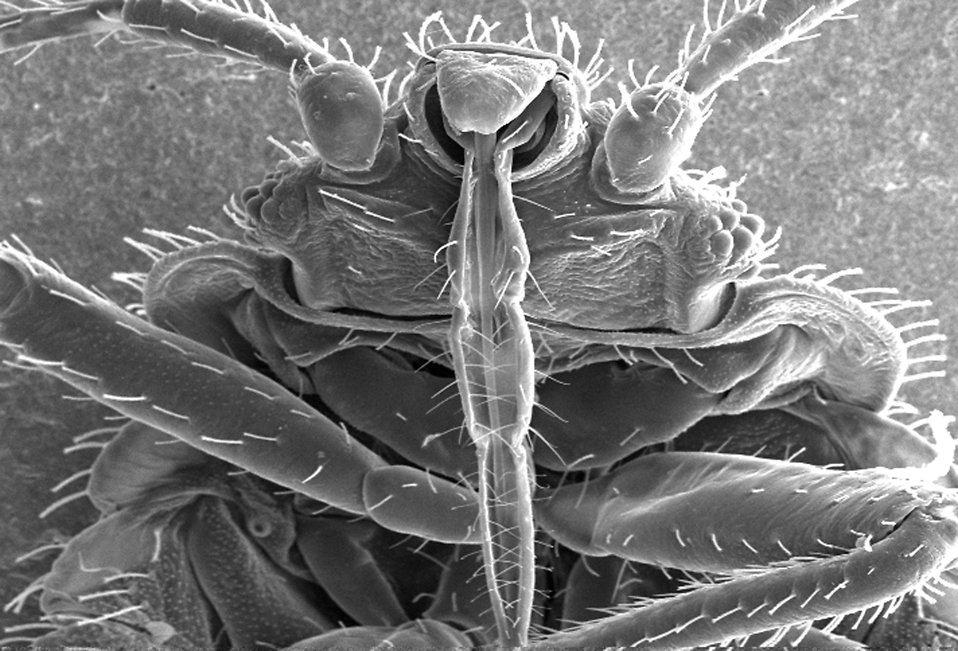 It helps to have a thick skin, and this is literally true for bed bugs. Like all insects, bed bugs are covered by an exoskeleton called a cuticle. Recent research has shown that bed bugs have evolved to beat modern insecticides by developing a thicker cuticle that helps them to survive exposure to common sprays and poisons.
It helps to have a thick skin, and this is literally true for bed bugs. Like all insects, bed bugs are covered by an exoskeleton called a cuticle. Recent research has shown that bed bugs have evolved to beat modern insecticides by developing a thicker cuticle that helps them to survive exposure to common sprays and poisons.
The study, published in the journal PLOS ONE, discovered that the density of a bed bug’s exoskeleton corresponded to the length of time it could withstand the presence of the pyrethroid insecticide Demand CS.
A team of Australian scientists exposed bed bugs to the insecticide and recorded how long it took for them to die. The exoskeletons were then measured using scanning electron microscopy. Those that survived for 24 hours had notably thicker cuticles than those that perished within a few hours. The thicker exoskeletons slowed the rate of insecticide absorbed into the bed bug’s bodies, and gave the creatures more time to produce protective enzymes.
University of Sydney doctoral student David Lilly said pyrethroid insecticides are a type of chemical to which bed bugs have grown increasingly resistant over the years. Eradicating insecticide-resistant bed bugs may require poison concentrations 1,000 times greater than that necessary to kill non-resistant bugs.
Human population growth and global travel have helped the bed bug become a major source of irritation in bedrooms and hotel rooms around the world. Infestations can spread quickly and the bed bugs are difficult to eradicate once an infestation is established. They can survive for a year without food, and a single female can infest an entire building. Insecticides have traditionally been the most popular way to deal with them, but the parasites are rapidly developing resistance.
In addition to increased exoskeleton density, bed bugs have also evolved other mechanisms to survive exposure to chemicals. The insects have developed protein mutations that prevent pyrethroid insecticides from targeting sodium channels within the bed bug nervous system, and they can also produce a number of enzymes that detoxify common insecticides.
“There’s a synergistic response between cuticle thickening and other detoxification mechanisms,” said Lilly. ““If we understand the biological mechanisms bedbugs use to beat insecticides, we may be able to spot a chink in their armour that we can exploit with new strategies.”
The study adds to earlier research that found the parasites have developed a tolerance to commonly used neonicotinoids or neonics, including acetamiprid, dinotefuran, imidacloprid and thiamethoxam. These findings reinforce the importance of smart pest management, in particular the use of non-chemical techniques such as extreme heat and cold.
If you really want to get rid of bed bugs today try SayByeBugs! It was developed as a safe and highly effective alternative among a sea of products that rarely deliver on their promises.

